The fight against invasive species takes a bizarre and creative twist: Conservationists are saving endangered marsupials by throwing drugged amphibian sausages out of helicopters.
You read that right. In an effort to save Australia’s endangered northern quoll from the invasive cane toad, scientists and wildlife managers are teaching quolls to steer clear of the poisonous toads by making sausages from toad legs, lacing them with nausea-including chemicals, and chucking them out of helicopters into one of the quoll’s last strongholds in the Kimberley.
A Little Marsupial in Big Trouble
Northern quolls rank rather high on the adorable index, even in a continent chock-full of endearingly weird mammals. About the size of a large kitten, these spotted, carnivorous marsupials are one of four quoll species found throughout Australia.
Northern quolls are perhaps best known for their baffling reproductive strategy: males put so much effort into finding and mating with multiple females that nearly all of them die en-mass each year, leaving the females to raise their offspring alone. Much of the northern quoll’s diet is made up of invertebrates, but they also eat small mammals, birds, lizards, snakes, and frogs.
A combination of grazing, altered fire regimes, and feral predators caused northern quoll populations to decline over the last century. Formerly found across much of northern Australia, the species is now restricted to a few small pockets of its former range, including the Kimberley, a remote northern section of Western Australia.
“The Kimberley population is one of the last strongholds where quolls are doing well,” says Jonathan Webb, wildlife ecologist at the University of Technology Sydney. “If we lose those quolls we’re looking at disaster.”
Unfortunately, the Kimberley is also at the front of the cane toad invasion.
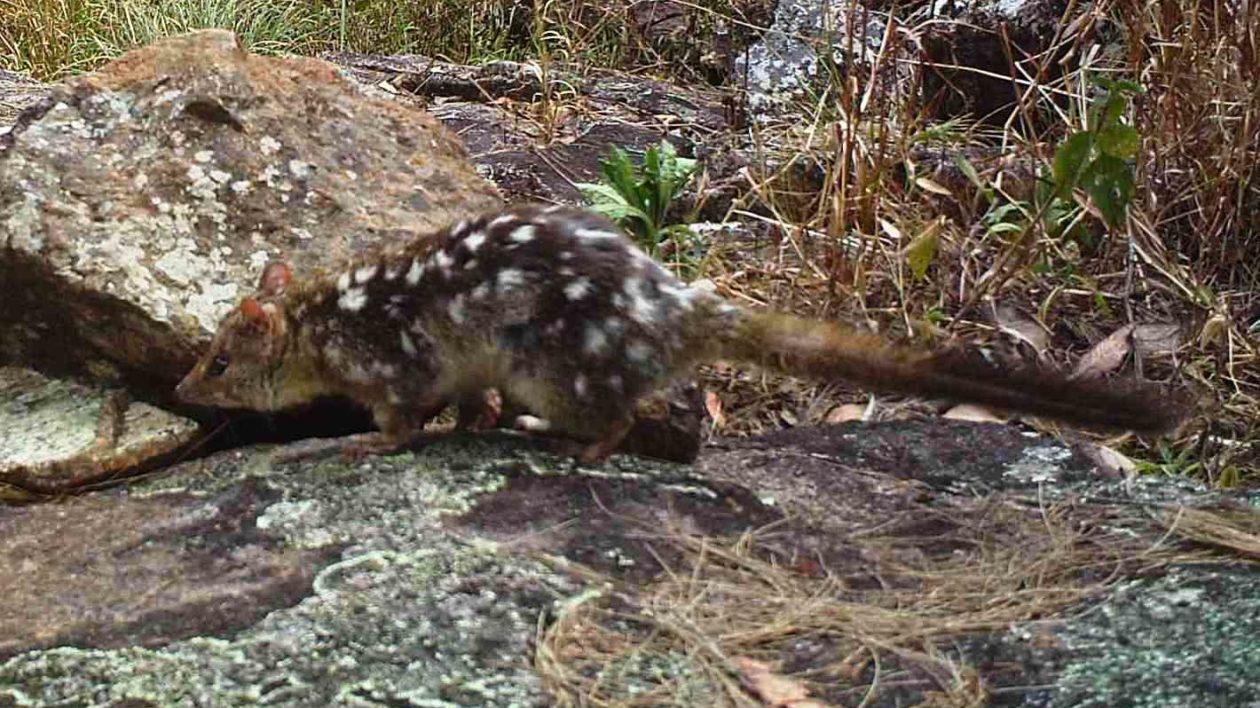
The Ultimate Amphibian Invader
Cane toads are a testament to good intentions gone horribly awry.
In 1935, the Australian government introduced 102 cane toads into Queensland’s sugarcane plantations. Native to Central and South America, these massive toads eat beetles and other agricultural pests, and the hope was that the toads would improve sugarcane yields. Unfortunately, despite continued wide-scale releases the toads didn’t make much of an impact on the beetles. But they did take a hefty toll on native wildlife.
The toad’s destructive power is threefold: they’re prolific breeders, and they compete with native wildlife — one study found that toads oust rainbow bee-eaters from their nests, after preying upon their eggs or nestlings.
And they’re also extremely poisonous.
When threatened, adult cane toads excrete deadly bufotoxin from glands on their necks and backs, often killing the unfortunate crocodile, dingo, or quoll that tries to eat them. Even toad eggs and tadpoles are poisonous, although to a lesser degree. (One of the bufotoxin chemicals, bufotenin, allegedly has psychoactive properties and is listed as a prohibited substance under Australian law, alongside heroin and cannabis.)
The Kimberley is one of the last strongholds…if we lose those quolls we’re looking at disaster.
Jonathan Webb
Since their initial introduction, cane toads have spread throughout tropical Australia, currently advancing at the rate of 40 to 60 kilometers each year and devastating native wildlife populations as they go. Following cane-toad invasions, scientists have documented declines in populations of freshwater crocodiles, large varanid lizards, and mammals.
“They’re absolutely catastrophic for large predators,” says Rick Shine, an evolutionary biologist at the University of Sydney and cane toad expert. “We get some figures like 95 percent mortality within the first two months of toad’s arrival.”
Shine explains that larger predators are impacted most because the amount of poison in a toad increases rapidly with body size. Smaller predators attack smaller, less-poisonous toads, get sick, but survive and learn to avoid them. Larger predators, including quolls, take on big toads with deadly levels of bufotoxin.
Cane toad evolution exacerbates this problem further: Shine says that cane toads at the invasion front are evolving rapidly, and one of the results is that these toads are much larger (and therefore more poisonous) than non-invasion-front toads.
“If you’re a quoll or a large goanna, the first toad you meet will probably be a very large one,” says Shine, “and so it will probably be the last toad you meet.”
The toads’ impact on northern quolls has been severe. Already-declining quoll populations crashed precipitously after the toads reached Kakadu National Park in 2001. Now, conservationists fear that the same thing will happen once the toads invade the Kimberley.
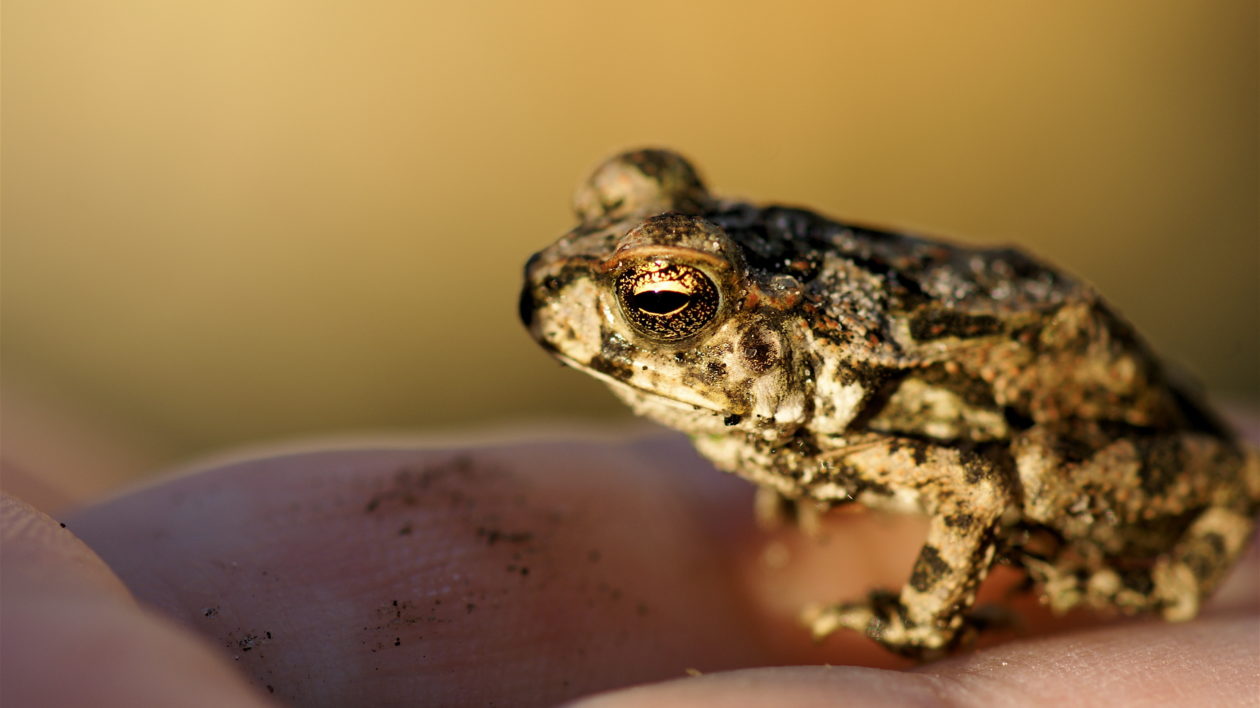
Teaching Quolls to Avoid Toads
Cane toads currently occupy 60 percent of the northern quoll’s historic range, and scientists predict that they’ll occupy all of it within the next 20 years. A compete occupation of the Kimberley is expected within a decade. And unfortunately, the toads are here to stay.
“There’s simply no way in the world that we will eradicate cane toads from Australia,” says Shine. He explains that it comes down to simple math: a single female toad can produce 30,000 eggs in one clutch.
As an insurance policy for quolls, the Australian government established a captive breeding colony. They’ve also captured several quolls and translocated them to two offshore, toad-free islands. But without a way to mitigate the effects of toads on the mainland, reintroduction won’t be a viable option.
“The ecosystems of the planet are full of invaders that we have no realistic hope of ever getting rid of,” says Shine, “so the alternative strategy is to give the native ecosystem a helping hand to deal with the invader.”
And that’s where the sausages come in.
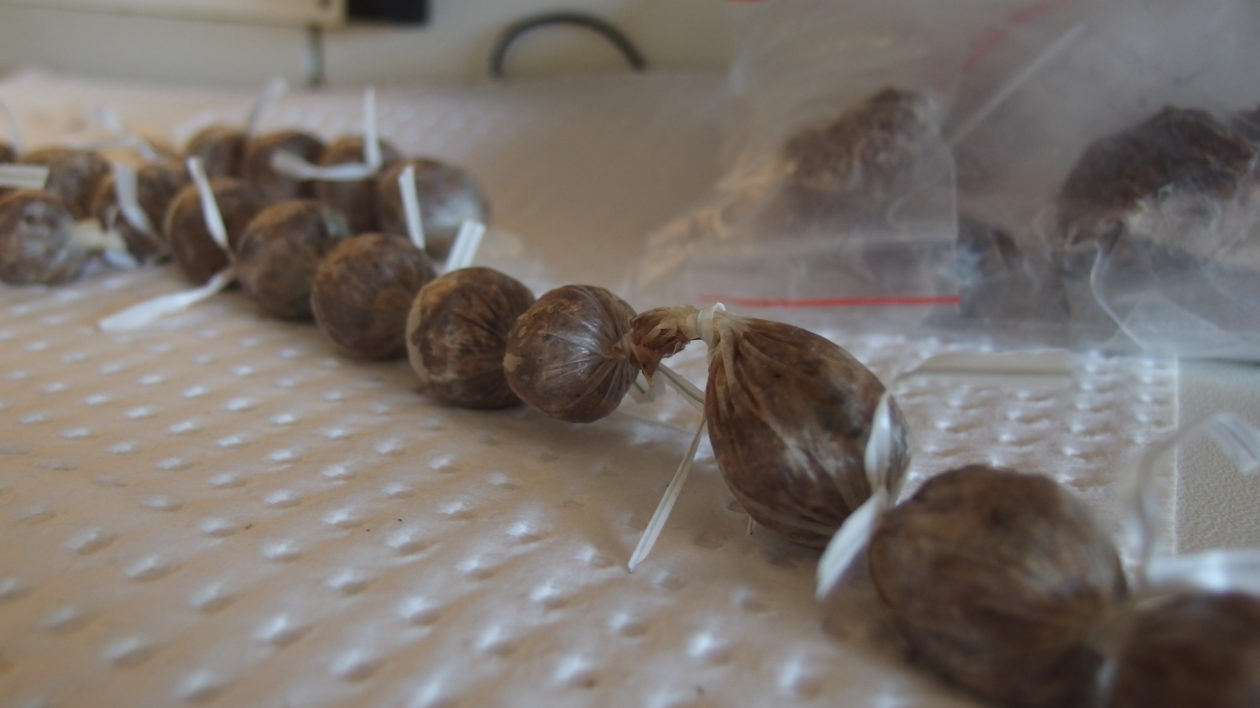
Wild predators are smart. If they eat something that makes them ill, they’ll learn to avoid that food. Called conditioned taste aversion (CTA), this behavior is well documented in the animal world. Unfortunately, CTA doesn’t kick in if that first bad meal kills you, which is often the case for quolls and toads.
But what if scientists could use CTA to teach quolls to avoid toads before they invaded?
Jonathan Webb is doing just that. Working with Shine and other scientists, he discovered that captive quolls can be taught to avoid toads.
Working with captive quolls destined for release back into the wild, Webb and his colleagues split the quolls into two groups: toad-smart and toad-naive. They gave the toad-smart quolls a non-poisonous cane toad laced with the nausea-inducing chemical thiabendazole.
Then both groups of quolls were fitted with radiocollars, allowing the scientists to monitor their survival, and released into the wild. Some of the toad-naive quolls died from cane toad poisoning just hours after release, while the toad-smart quolls fared considerably better. Webb found that, on average, toad-smart quolls survived twice as long as toad-naïve female quolls, while toad-smart males survived five times longer than toad-naïve males.
But for CTA to work as a viable conservation tool, quolls needed to pass the aversion to toads on to their offspring. Luckily, Webb’s research shows that this is happening.
“The really interesting question is how do they learn,” says Webb. “We’re not sure, but we have reasonable evidence that it’s social learning.” Studies by Webb’s colleague, Teigan Cremona, show that juvenile quolls spend time foraging with their mothers even after leaving the den, so they could learn to avoid toads by watching their mothers encounter toads and ignore them.
And ongoing research by Ella Kelly, at the University of Melbourne, is exploring if conservationists could translocate northern quolls from Queensland — who may have evolved toad-smart genes — to the invasion front to help the local quoll population adapt more quickly.
Toad Sausages in the Kimberley
The next step is to see if scientists can train wild quolls in advance of the toad’s invasion in the Kimberley.
“Quolls in the Kimberley are genetically distinct from quolls elsewhere,” says Katherine Tuft, a wildlife ecologist with Australian Wildlife Conservancy (AWC). “And there are just masses of quolls here, particularly on the northwest coast, so it really is a stronghold for the species.”
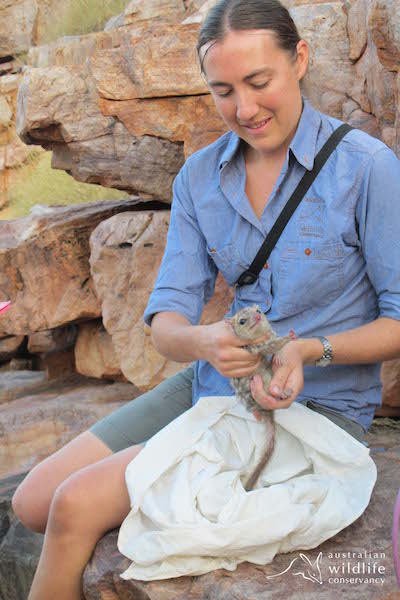
In late November and early December, Tuft and other AWC ecologists will attempt to train a population of wild Kimberley quolls at Mornington Wildlife Sanctuary before the toads arrive, which Webb says will probably happen this December.
“The big unknown is if this method will work at a population scale with wild quolls,” says Tuft.
First, AWC ecologists will put out camera traps along a 14-kilometer stretch of rocky gorge to estimate how many quolls live there. “Quolls have these unique spots, Tuft says, “and you can actually identify individuals from camera trap images.”
Then, they’ll deploy the first round of baits via helicopter. But instead of training the quolls with small toads, she’ll use thiabendazole-laced sausages made from toad legs.
“We’ll fly low and slow up the gorge, dropping sausages as we go,” she says. Surprisingly, the sausages hold up well to being chucked out of a helicopter. “They’ll be partially frozen when we drop them,” Tuft explains, “so that will lessen the splat factor.”
This first bait deployment will target adult female quolls with young. Tuft and her AWC colleagues will run a second bait deployment in March, after the juvenile quolls emerge, so they too can encounter baits and learn to avoid toads. Subsequent population monitoring via camera traps will allow AWC to see how well the CTA training worked as the toads arrive.
“For this first stage, what we want to know is do the baits teach quolls sufficiently that they survive?” she says. Hopefully, the experimental population in the gorge will hold up better than other quoll populations in Mornington that don’t receive the toad-sausages.
If the initial field trial proves successful, Tuft and her colleagues will mass-deploy sausages to other Kimberley quoll populations as the toads continue their advance across the region.

The Fate of Toads in Oz
The work of Tuft and Australian Wildlife Conservancy, Webb, Shine, and others will hopefully give the Kimberley’s northern quolls a head start against the imminent toad invasion, but CTA isn’t a magic solution to saving the quoll. The hard truth about cane toads is that it’s simply not possible to eradicate them, and they’re just one problem amongst many.
“One of the lessons that Webb’s work revealed is that even if you toad-proof the quolls, that simply reveals additional mortality sources,” says Shine. “Everyone wants to blame the toad, but the reality is that it’s much more complicated than that.
Australia is famous as the epicenter of mammalian extinction on the globe: More than 10 percent of the continent’s endemic terrestrial species have gone extinct in the last 200 years and a further 21 percent are threatened, including the northern quoll.
In northern Australia, populations of multiple mammal species were declining simultaneously long before the toads arrived. “We suspect that has something to do with loss of habitat complexity,” says Tuft, “possibly because excessive fire and grazing by herbivores reduced the ground cover, leaving these animals vulnerable to predation.”
The toads, it seems, are simply the final insult.

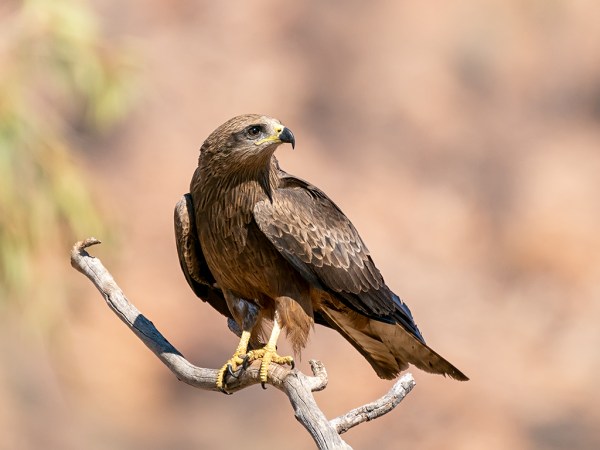


This comes from a vast well of ignorance on all related subjects, but I wonder how the introduction of sterile male cane toads would affect their population and/or spread. It’s a strategy being deployed with Aedes aegypti mosquitoes in the wake of Zika virus, and is being considered with the parasitic nest fly that’s ravaging Darwin’s finches in the Galápagos Islands. (Of course, the latter requires being able to successfully breed the flies in captivity–a yet unsuccessful endeavor last I heard.)
I don’t know. The idea is weird to me. Cane toads are certaibly an invasive species, and I do like the idea of saving any non-invasive species from endangerment, but something about this effort strikes me as a bit inhumane. Just sayin’. But, just so I’m not misunderstood, I guess if they have to be fed the cane toad is the best choice.